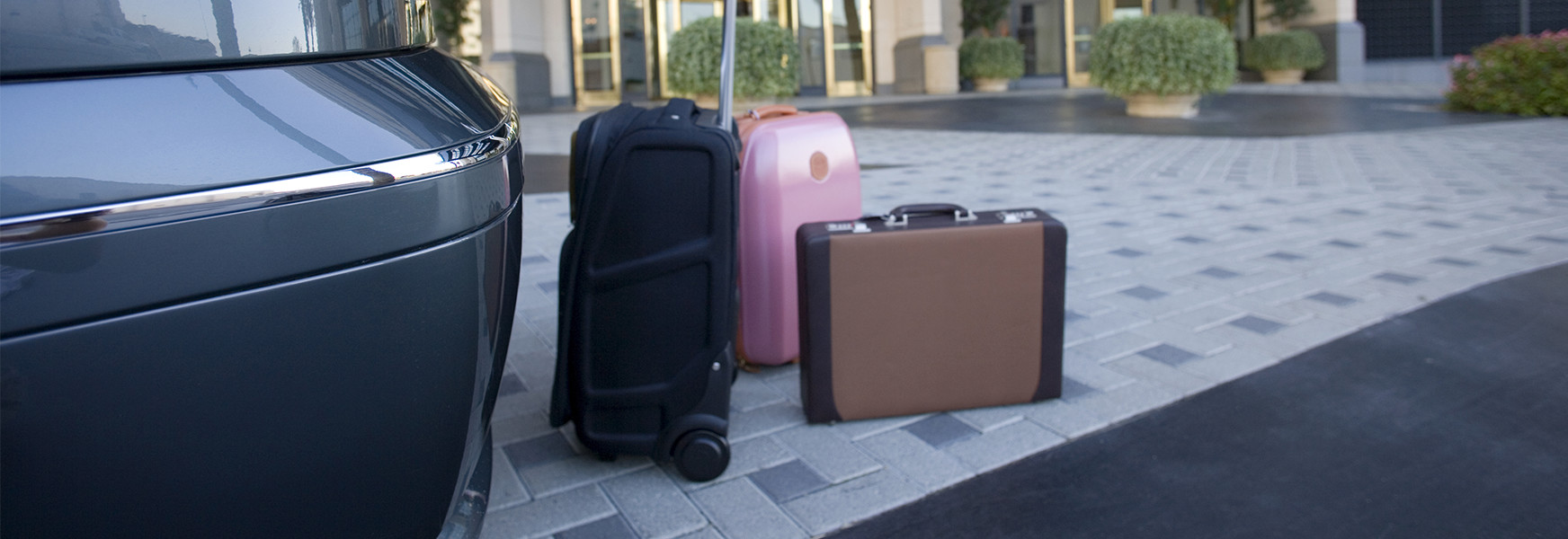Best Practices for Hotel Drivers and Guest Baggage

Hospitality employees are at an increased risk of injury compared to several other industries. According to the U.S. Bureau of Labor Statistics 2015 data, the injury and illness rate [1] for hotel employees was 5.1 compared to 3.0 for general industry.
Additionally, at properties servicing airports, often hotel shuttle drivers are lifting and handling guest baggage throughout their shift as well as spending significant time sitting in vans or mini-buses. The combination of risks, material handling and static sitting posture, increases the likelihood of injury for these workers. Read on for some tips on what to know and what to do to minimize risk and injuries.
WHAT TO KNOW
Shuttle drivers who handle passenger baggage, often to and from airports, may be exposed to risk factors that increase the risk of injury to the back, shoulders, and arms. Risk factors include forceful exertions, awkward postures, and repetition. In general, risk is increased when forces are greater, bending and reaching are more exaggerated, or physical actions are more frequent.
- Handling bags at airports that weigh 40 pounds or more has been found to increase the risk of injury for most healthy people. [2] Weight can also be concentrated more at one end of the bag or shift while handling it. Airlines often tag overweight bags as such, thus giving the handler some warning. However, that weight is generally for bags over 50 pounds so is not effective for most “heavy” bags. Most passengers don’t want to pay the overweight bag fee, but again that limit is usually 50 pounds.
- The lower back may be more vulnerable to injury due to prolonged sitting while driving. Sitting produces more stress to the lower back, especially if the seat doesn’t provide good support or the driver isn’t aware of proper posture. Stretch breaks that may be helpful are often not possible especially during the busy shifts of the day.
WHAT TO DO
- Test the weight of the bag and/or ask the traveler prior to fully lifting the bag. Knowing how much weight to prepare for and adapt practices to can be helpful. [3, 4] Choose to load these bags first to allow for more choice and to help minimize reaching if loading from the outside. As stated above, don’t rely on “overweight” tags or assume a smaller bag isn’t very heavy.
- When stowing baggage from outside the shuttle, consider positioning bags on the wheeled end or standing them upright. Doing so has been found to help reduce the physical demands on the back and shoulders.[3] From inside the shuttle, stowing bags on the lowest shelf with the wheels down can also make it easier.
- Pay attention to handle placement. Most bags have at least two handles. Use both handles to better distribute the effort required and to stay close as possible. Keeping the load close to the body’s centerline minimizes the stress to the body. Think “weight x distance = force.”
- If handling at chest height or above, consider supporting the bag from underneath rather than with a handle. This should help keep the arm closer to the body and protect the shoulder. Quick motions to start a lift should be minimized. Although the use of momentum can have some benefits, more effort is required to start the lift or motion.
- Lastly, after driving, or during breaks if you’re able, take a few seconds to stretch - place your hands on your hips, slightly bend your knees, and gently lean backward. It is beneficial to get in the habit of taking regular stretch breaks.
OSHA provides a Baggage Handling eTool focused on airline employees such as ticket agents and ramp agents, but some of the guidance may be helpful for any employee engaged in baggage handling. Additional hospitality resources for MEMIC customers can be found in the MEMIC Safety Director.
[1] BLS , Cases per 100 equivalent full-time workers
[2] NIOSH (2014), EPHB Report No. 010-22a
[3] Dell (1998), Safety Science Monitor
[4] Korkmaz et al (2006), Int’l Journal of Industrial Ergonomics

